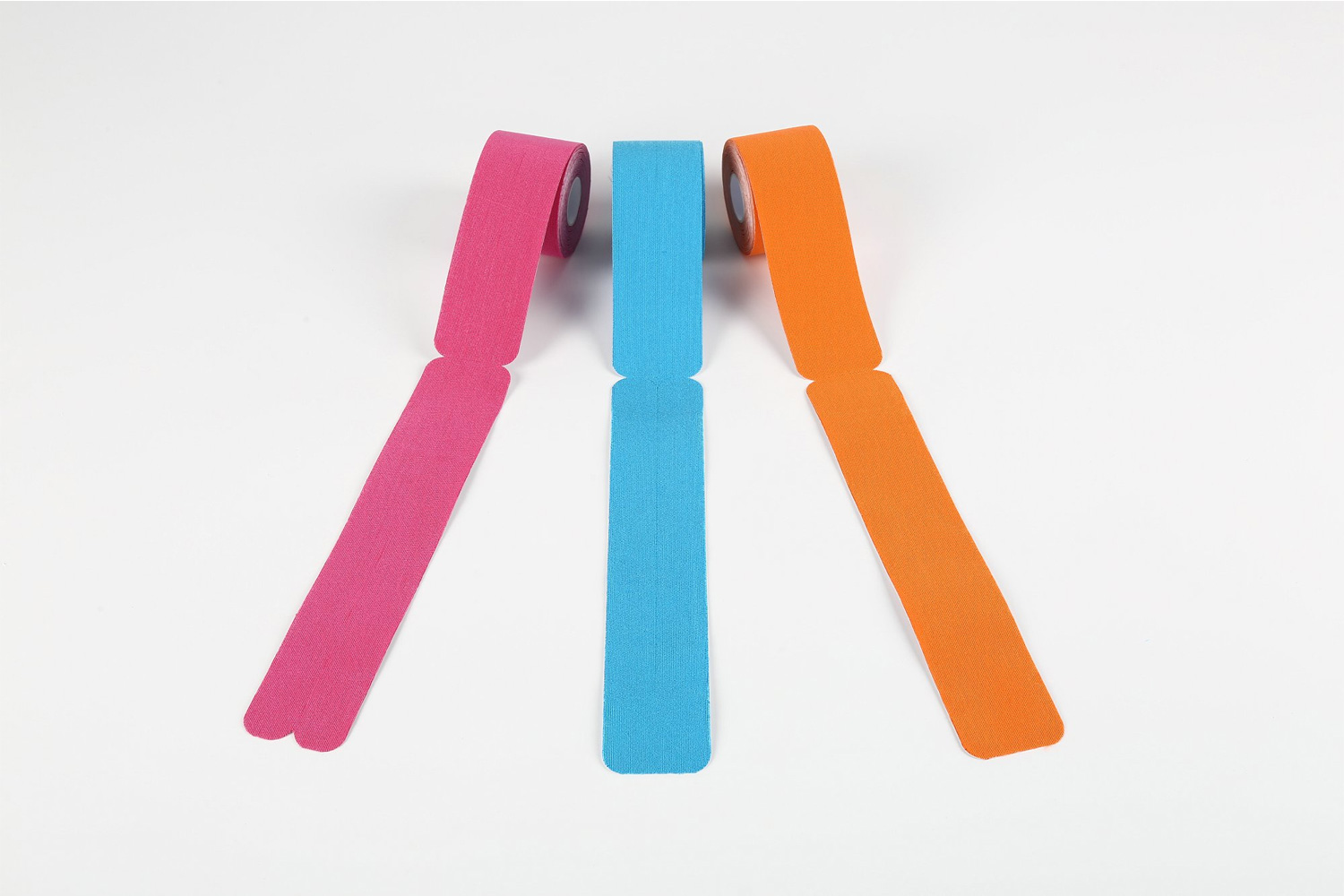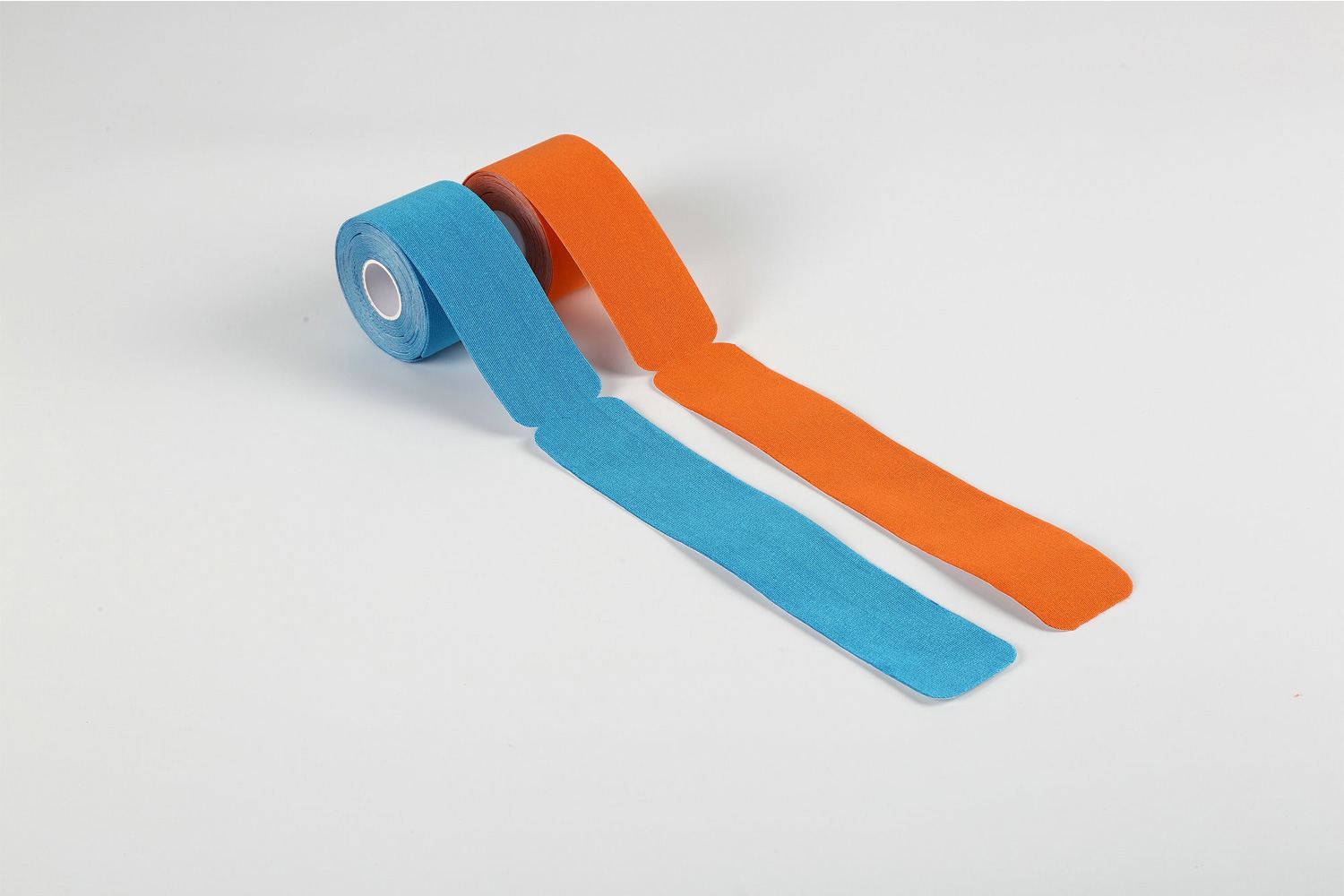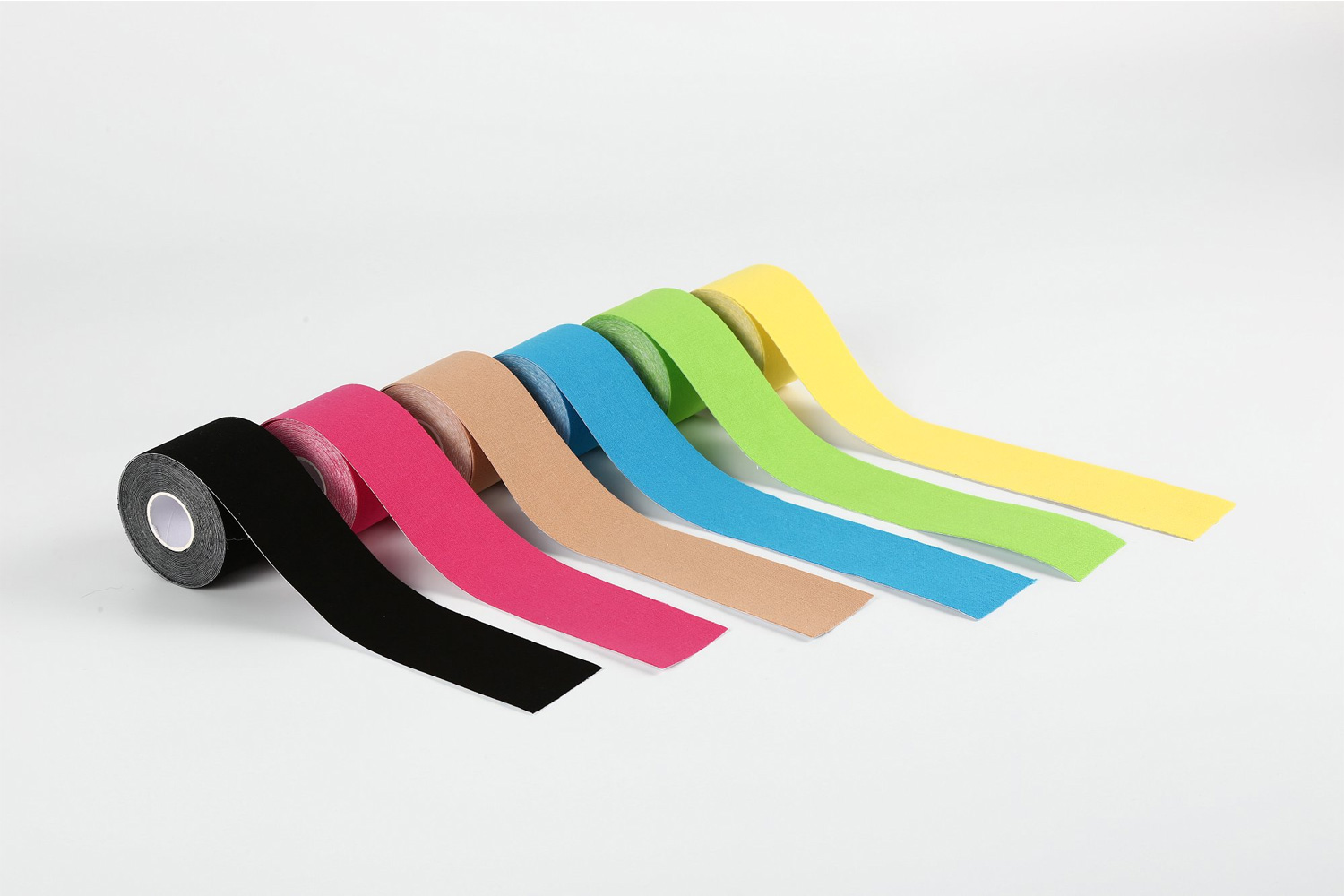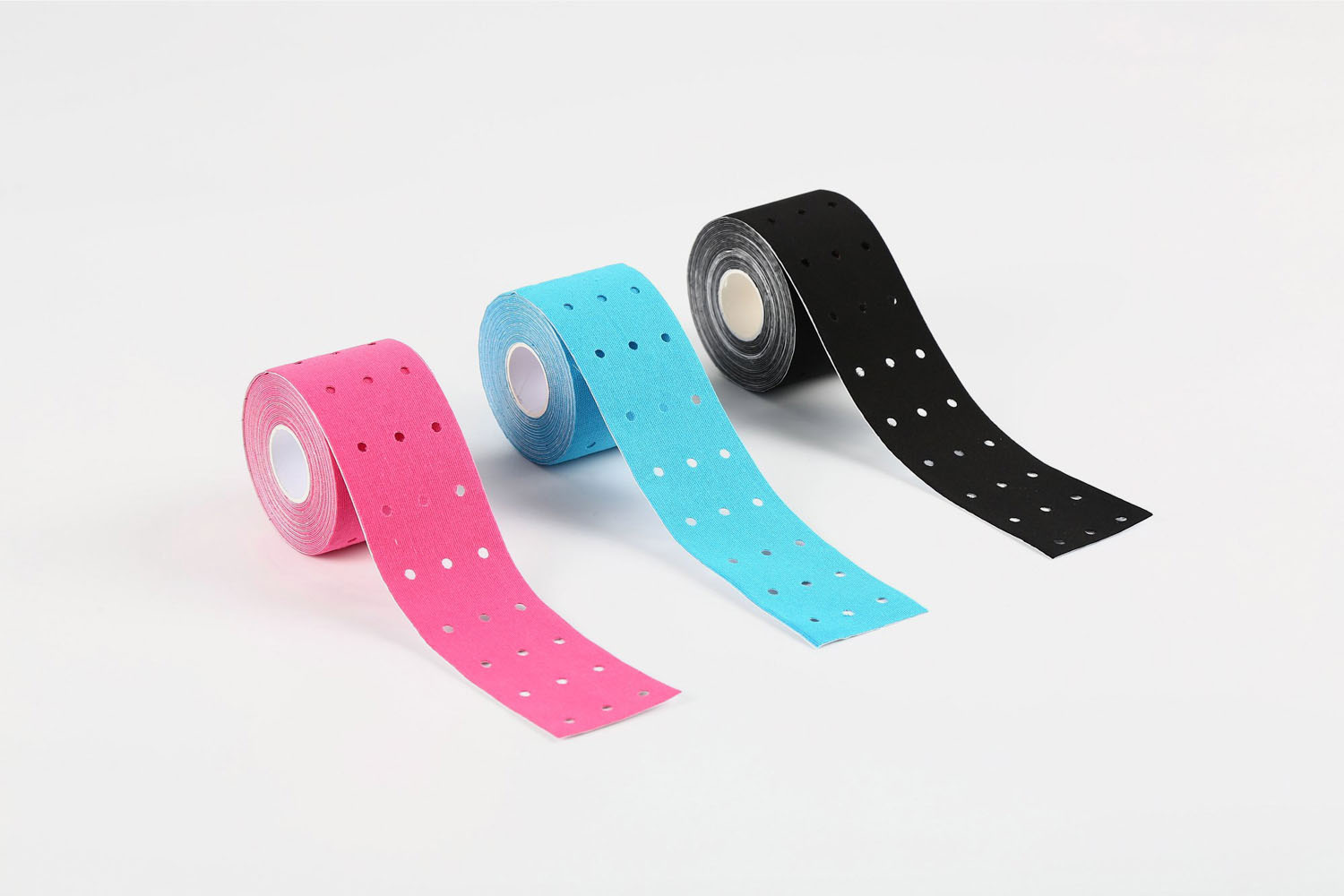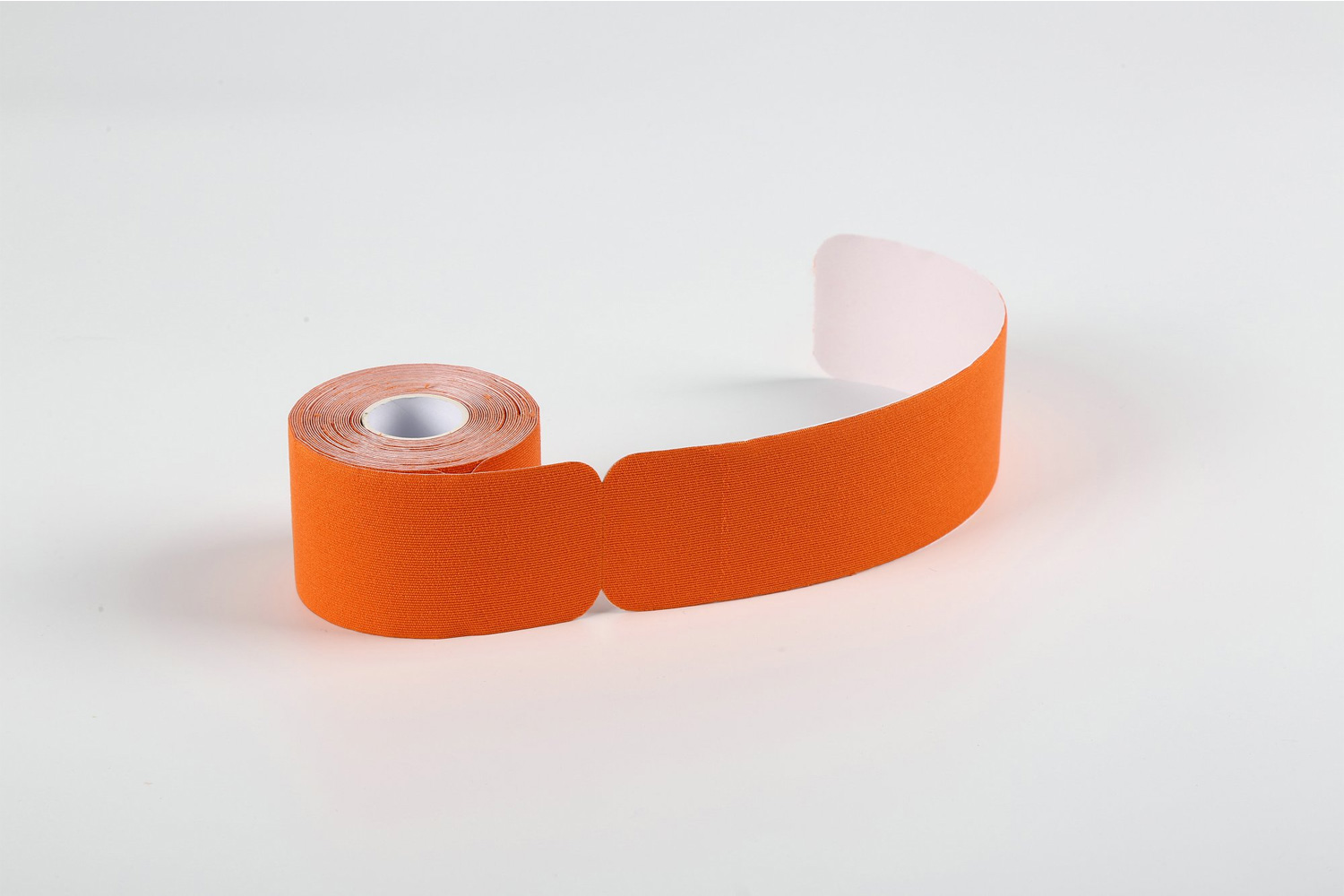Instructions for use of Rayon Kinesiology Tape
Rayon kinesiology tape is commonly used for providing support and relief to muscles and joints, enhancing recovery, and preventing injury.
Here are general instructions for using Rayon kinesiology tape effectively:
1. Prepare the Skin
Clean and Dry: Make sure the skin is clean, dry, and free from oils, lotions, or sweat. You may want to shave the area if necessary (especially for better adhesion).
Dry the Area: It's important that the skin is completely dry to allow the tape to stick properly.
2. Cut the Tape
Measure the Length: Cut the tape to the desired length, leaving a little extra at both ends to prevent it from peeling off.
Round the Corners: You can round the edges of the tape with scissors. This helps prevent the tape from lifting at the corners during movement.
3. Apply the Tape
The specific method of applying kinesiology tape will depend on the body part being treated.
Here's a general guide:
Anchor Point: Start by placing one end of the tape at the anchor point (where you want the support to begin).
For Muscles: Anchor the tape at the origin or insertion point of the muscle.
For Joints: Start around the joint, avoiding covering the actual joint surface.
Apply with Stretch: As you apply the tape, gently stretch the tape to the desired tension (usually 10-30% stretch for most applications). This stretch creates tension that helps lift the skin and underlying tissues, promoting better circulation and support.
Lay the Tape Smoothly: Smooth out the tape over the area, making sure it is flat with no wrinkles or air bubbles.
For Joint Support: You may need to leave a bit of slack over the joint to allow for natural movement.
End Points: When you reach the end of the tape, apply it without stretch and rub the ends to activate the adhesive. This helps it stick more securely.
4. Rub the Tape
After applying the tape, rub the tape gently with your hands. This warms up the adhesive and helps it stick better to your skin.
5. Check for Comfort
Ensure the tape is comfortable. You shouldn't feel restricted or in pain when wearing it.
If the tape is too tight or feels uncomfortable, remove it and reapply with less tension.
6. Wear and Care for the Tape
Duration: Rayon kinesiology tape can typically stay on the skin for 3–5 days, depending on how much you sweat and the conditions.
Waterproof: Most kinesiology tapes are water-resistant, so you can shower with the tape on. Gently pat the tape dry afterward.
Remove the Tape: To remove the tape, peel it slowly from one end, pulling it back toward the other. If needed, use some baby oil or adhesive remover to help ease the tape off without irritating your skin.
7. When to Reapply
If the tape starts peeling or loses its stickiness, you may need to replace it.
You may also want to reapply after intense physical activity or a shower, especially if the tape loosens.
8. General Tips
Avoid hair: Try to avoid applying the tape directly over a lot of body hair, as it may be uncomfortable to remove.
Don’t Overstretch: Applying too much stretch can cause irritation or reduce the tape's effectiveness. Aim for 10-30% stretch depending on the purpose.
Consult a Professional: If you’re unsure of how to apply the tape for a specific injury or condition, it’s always a good idea to consult a physiotherapist or other healthcare professional for guidance.
Special Applications (Common Areas):
Knee Pain: Apply the tape around the knee to stabilize the joint.
Shoulder Pain: Use a “Y” or “I” strip along the shoulder muscles.
Ankle Support: Tape the ankle in a "U" shape to provide support for sprains.
By following these instructions, you can maximize the benefits of Rayon kinesiology tape in supporting your muscles and joints!



